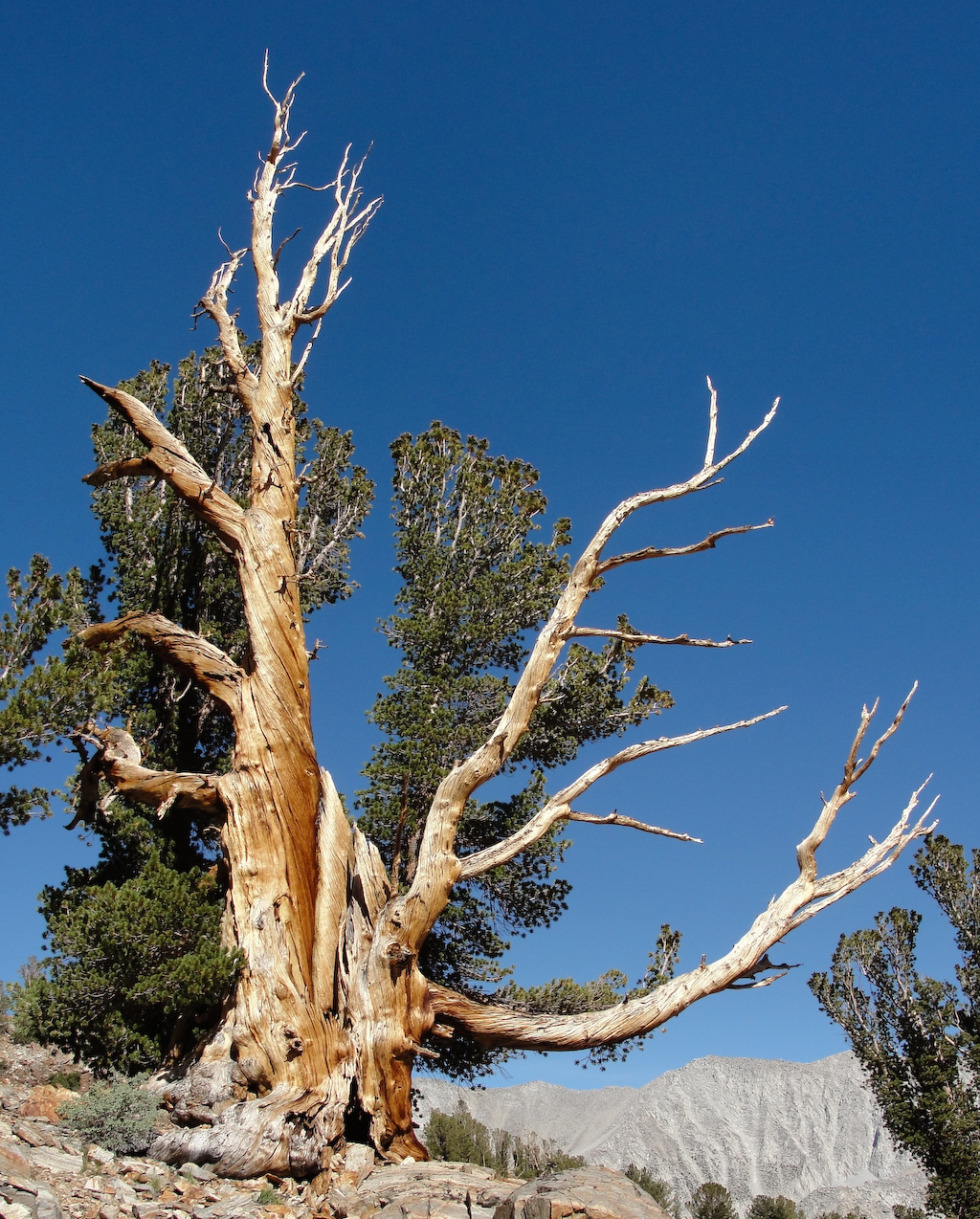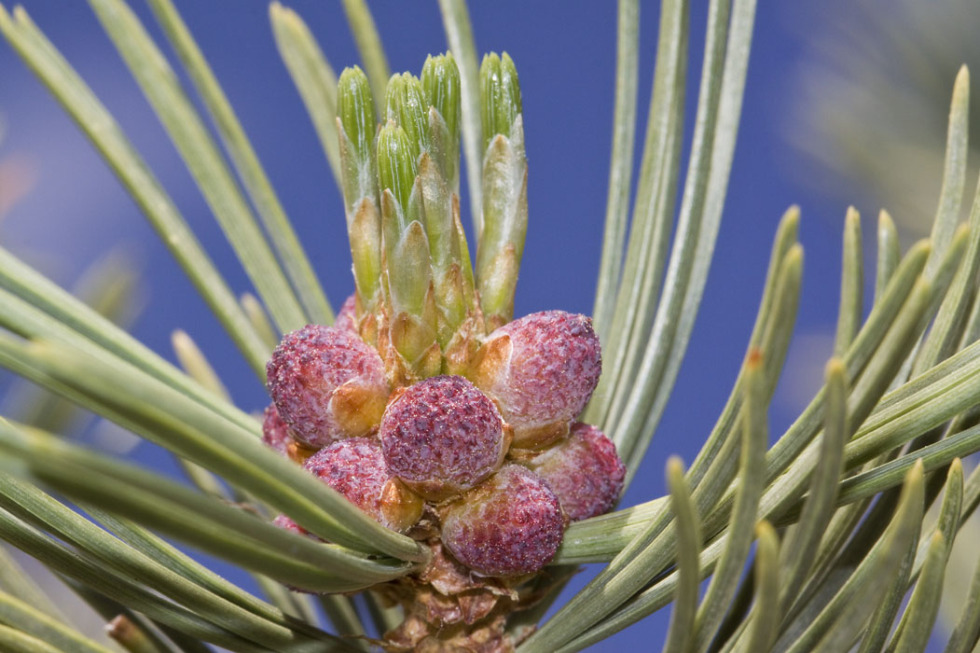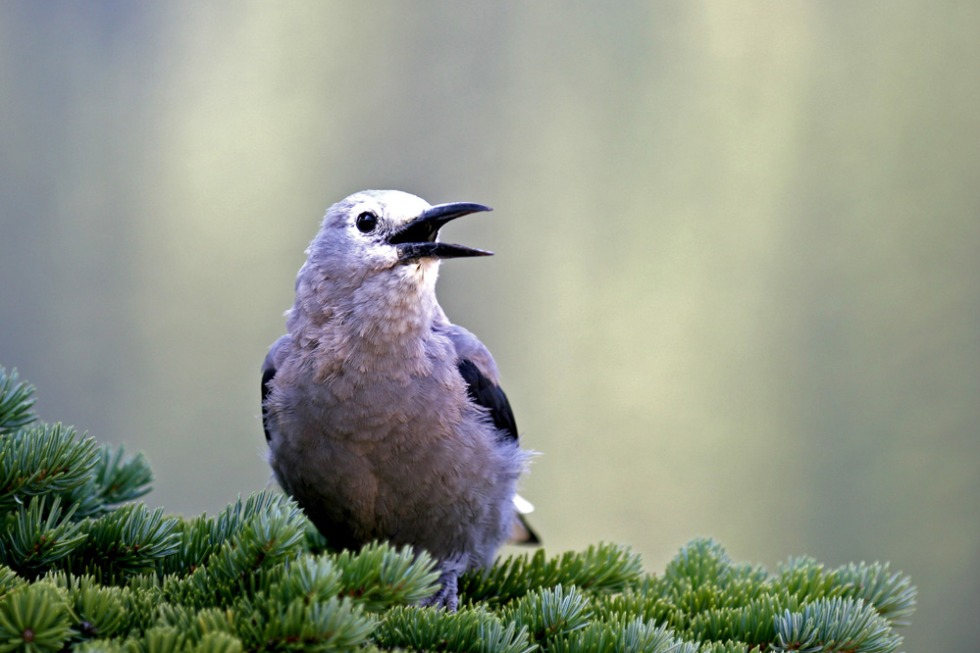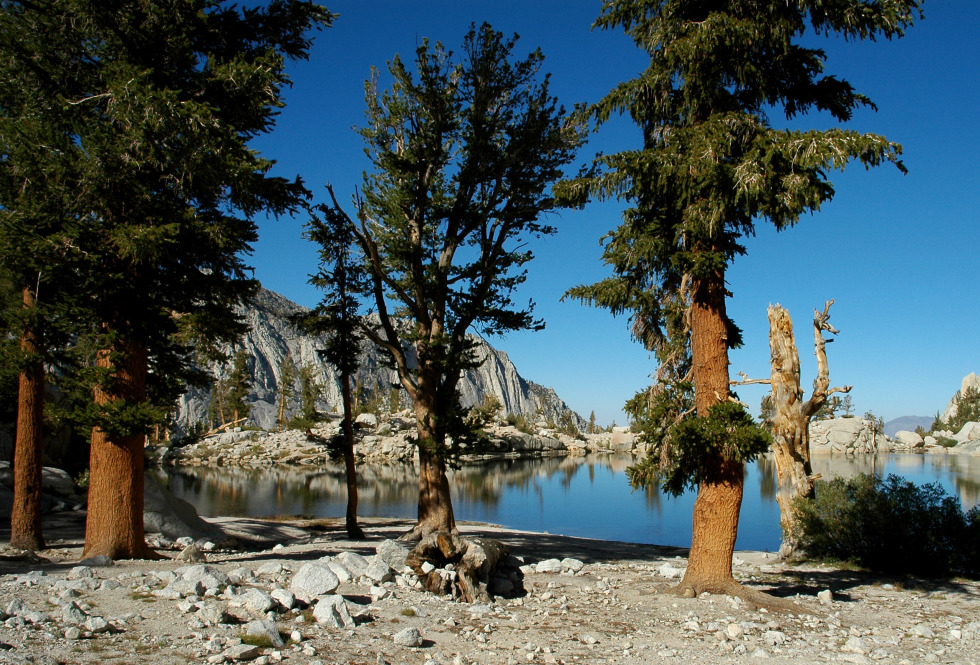It’s easy to forget just how much everything in nature is connected. We may joke about the “circle of life” and the “food chain,” but these simple concepts couldn’t be more applicable to the whitebark pine, Pinus albicaulis. Without the Clark’s Nutcracker, Nucifraga columbiana, the whitebark pine would struggle to reproduce, meaning that the perpetuation of an entire tree species depends largely on the habits of one small bird.
Whitebark pines grow throughout the Northern Rockies of the United States, the Southern Rockies of Canada, and in the Cascades and Sierras. Thriving in harsh and rocky areas, they can be found at tree line in subalpine regions, often exposed to high winds and weather. In optimal conditions, whitebark pine can grow up to 60 feet, but atop a mountain, it’s not unusual to see much shorter, gnarled looking trees growing close to the ground.

Seed Distribution
Small, dark purple cones distinguish whitebark pine from similar species. Compact and tough, the cones are adapted to survive in the harsh condition where the whitebark lives and are covered with thick scales that protect vulnerable seeds. However, unlike most pinecones, the whitebark’s do not open upon drying, instead requiring the scales to break apart before the seeds are released.

Fortunately for the whitebark, the Clark’s Nutcracker is a ready and willing assistant – the birds crack the cones to harvest the large, nutritious seeds, which they then bury in caches to retrieve later. A single Clark’s Nutcracker can hide anywhere from 30,000 to 100,000 seeds in a year. Thanks to these caches, many of which go unretrieved, whitebark pine seedlings have an improved chance at life.

"Clark's Nutcracker"
But the Clark’s Nutcrackers aren’t the only species to rely on whitebark pine, nor the only species to help them out.
- Squirrels also store the pinecones in middens, likewise breaking up the cones and releasing the seeds.
- Bears then raid the middens consuming the nutritious seeds as primary source of pre-hibernation food. Some seeds simply pass through the bears and are deposited with a healthy mound of natural fertilizer far from their original location, improving genetic diversity and allowing the whitebark to “move” farther than it ever could on its own.
Simply put, without whitebark pine trees, many alpine ecosystems would not thrive.
Close Tie to Water
Since whitebark pines dominate the high alpine community, they play a pivotal role in the hydrology of the drainages over which they preside. Growing on the wide ridges of mountains, whitebark pines act as a snow fence, accumulating high elevation snow. Over the long alpine winter, these piles can be substantial. Because they take longer to melt in the spring, the piles play an important role in extending stream flow periods throughout the entire watershed.

Lone Pine Lake, Inyo National Forest, CA
Threats
Unfortunately, this crucial species faces many threats. White pine blister rust, a fungal disease from Europe, has infected many whitebark stands across its range. Fortunately, a small number of trees have a genetic resistance to the disease, so public agencies, like the U.S. Forest Service, have been working to harvest rust-resistant cones in the hopes of growing rust-resistant trees.
Additionally, warming temperatures caused by climate change have allowed the ever-present mountain pine beetle to colonize the high elevation zones where whitebark live. Trees already suffering from blister rust as especially susceptible to the relatively new threat of pine beetles, exacerbating an already serious issue.
Decades of wildfire suppression have impacted the whitebark pine too. Infrequent, low-level wildfire cycles historically helped remove fire-intolerant species such as subalpine fir and Engelmann spruce from competing with whitebark seedlings. Absent fire, these trees grow faster and better than whitebark pines, ultimately converting whitebark forests to fir and spruce forests. As well, fire helped remove older whitebark pines that are more susceptible to beetle and white pine blister rust, thus slowing the spread of each.
How You Can Help
Despite this enormous effort, reforestation initiatives do exist. The NFF is working with the U.S. Forest Service to plant whitebarks on the Idaho Panhandle National Forest as part of our Treasured Landscapes conservation campaign. Visit our Reforestation Program page to find out how you can join our generous donors and support planting trees!
The NFF is also working with the Lake Tahoe Basin Management Unit in California on whitebark pine surveys and plantings.

